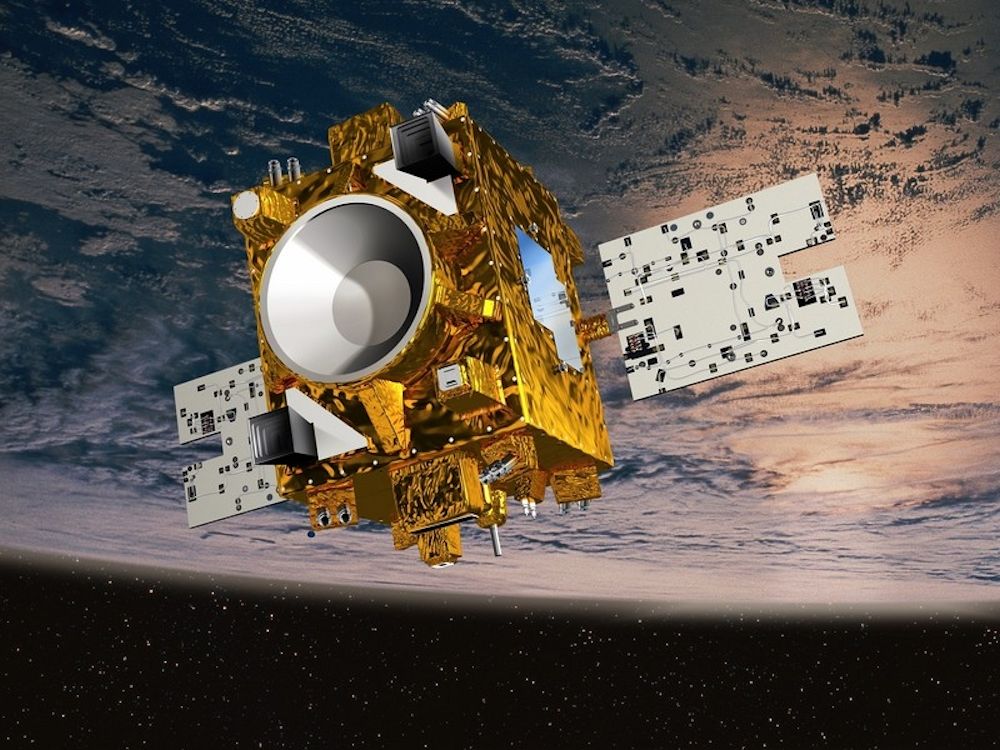Gravity makes no distinction between a planet, a human being or a blade of grass. Though this may not come as a surprise to you, theoretical physicists are over the moon with a new study that strengthens the foundation of this postulation.
Galileo conceived an experiment, without making it in practice, in which he dropped two objects of different composition and mass together from the top of the Tower of Pisa. Satellite Microscope does the same, but more accurately. (Image: CNES)
Launched in April 2016, the ‘Microscope’ satellite mission set out to test the universality of free fall, also known as the ‘weak equivalence principle’, one of the founding assumption of Einstein’s theory of general relativity. “The theory postulates that gravity is not a ‘pulling’ force, but is the result of large bodies, like the Earth, bending spacetime,” or so a press release from Imperial College, a university involved in the experiments, explains.
Microscope stands for Micro-Satellite à traînée Compensée pour l’Observation du Principe d’Equivalence. It is a 300 kilogramme class mini satellite operated by the French National Centre for Space Studies (CNES). Using this satellite, researchers were able to test the universality of free fall with a precision in the order of 10−15, 100 times more precise than can be achieved on Earth. The findings were published last month in the journal Physical Review Letters. TU Delft researchers of theAstrodynamics and Space Missions group were involved in the study.
“Finding a deviation from general relativity is the holy grail in physics,” says Dr Dominic Dirkx of the section Astrodynamics and Space Missions.
Violated at weak levels
“The weak equivalence principle implies that when two objects are dropped in a vacuum under the same force of gravity, they fall at the same rate, no matter their difference in mass or composition. We know from experience that this holds for everyday life objects. Or so we think. Does it really hold absolutely if we measure it at the level of a fraction of a second?”
There are theories in physics that predict that the equivalence principle may be violated at very weak levels. And the theory of general relativity is fundamentally incompatible with another well-tested theory: quantum mechanics, which describes the physics of the extremely small.
‘People are out looking for a unifying theory of physics ’
“So people are out looking for a unifying theory of physics,” says Dirkx. “This extremely precise measurement of the equivalence principle, a precision to the order of 10−15, crosses off some alternative theories. That makes this publication so important and exciting.”
To test the principle, the Microscope satellite contains two concentric cylindrical test masses made of different materials—one titanium and one a platinum-rhodium alloy, CNES explains on its website. They are minutely controlled to maintain them motionless with respect to the satellite inside independent differential electrostatic accelerometers. If the equivalence principle is verified, the two masses will be subjected to the same control acceleration. If different accelerations have to be applied, the principle will be violated: an event that would shake the foundations of physics.
TU Delft researchers in Prof. Pieter Vissers’ Astrodynamics and Space Missions group were indirectly involved in the study. They are using the data from the satellite for something completely different: to perform calculations on the density of space right outside the atmosphere.
“There are hardly any particles there, but the few particles that are out there do cause small drag on satellites,” Dirkx explains. “It is important to understand the effects of these particles in order to calculate satellite trajectories, and gain better insight into space weather.”
- ‘Microscope Mission: First Results of a Space Test of the Equivalence Principle’ by P. Touboul et al. is published in Physical Review Letters.



Comments are closed.